Serving San Diego, Orange County, Los Angeles, and Riverside
Fast-track Surgery to Heal a Broken Leg
Let the SurgiPet Team tell you if surgery is the best option to fix your pet’s broken leg.
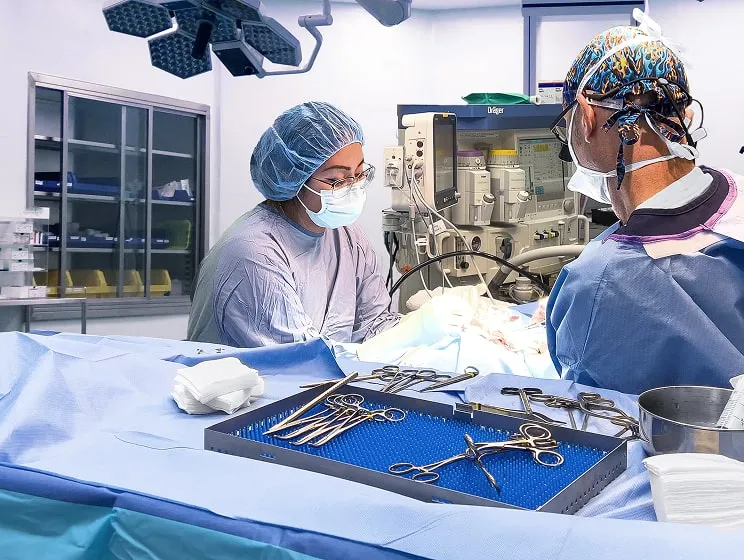
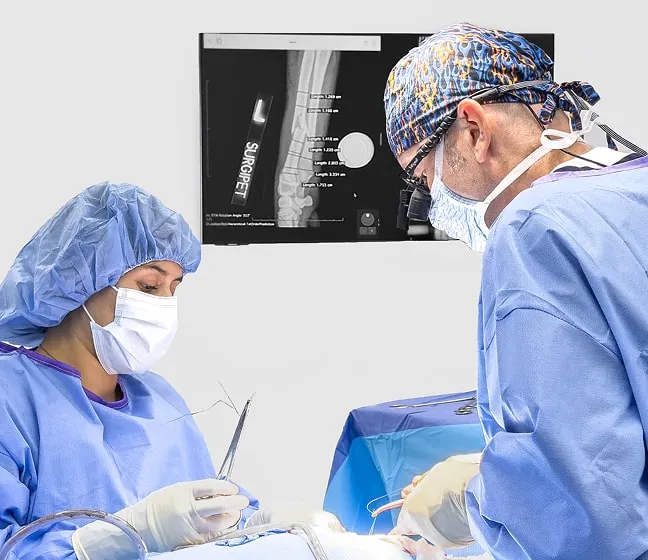
Understanding Pet Fractures and Broken Bones
Broken bones in dogs and cats are often caused by accidents, falls, or trauma. The most common fractures involve the legs, hips, or pelvis. Without proper surgical repair, broken bones may not heal correctly, leading to chronic pain, lameness, or arthritis.
 Restores normal bone alignment for better healing.
Restores normal bone alignment for better healing. Prevents long-term mobility problems and arthritis.
Prevents long-term mobility problems and arthritis. Helps pets return to walking, running, and playing faster.
Helps pets return to walking, running, and playing faster.
Serving the San Diego, Orange County, Los Angeles and Riverside Areas
Pet Fracture Repair Experts
At SurgiPet, we know how stressful it can be when your pet may need surgery – especially in an emergency. The worries are endless: ‘How bad is the break?’ ‘Can we avoid surgery?’ ‘Will my dog be able to walk and run again properly?’
We’re here to guide you every step of the way. If surgery is needed, our surgeon will explain everything clearly — and we can move forward with same-day fracture repair. You’ll be fully prepared for recovery and have access to expert support seven days a week.

Your Pet’s Broken Leg Surgery Journey
Initial Consultation
We don’t rush - each consultation includes a full history, a careful hands-on exam of your dog, and time to talk through your goals, concerns, and what matters most to you.
Same-Day Fracture Repair
Experience counts! Our surgeon has performed thousands of orthopedic surgeries over the course of his professional career. With that experience, your dog is in the best hands.
Recovery Plan
Your pet will go home comfortable, fully recovered from anesthesia, and able to walk. You will receive printed instructions, and dedicated post-operative support is available 7 days a week-including weekends.
Providing peace of mind and comfort
What to Expect After Pet Fracture Repair Surgery
Most dogs recover their mobility within weeks and return to their favorite activities within a few months. With proper care, your dog can enjoy a long, active, and pain-free life.
Tips for Recovery:
✔ Follow all activity and exercise restrictions closely.
✔ Return for scheduled rechecks - they’re covered in the surgery fee.
✔ Contact us with any concerns - the surgeon is just a phone call away.

The Safest pet anesthesia. For Every Pet. In Every way.
Ensure your pet’s safety with expert anesthesia care tailored to their specific needs, managed by a board-certified veterinary anesthesiologist.
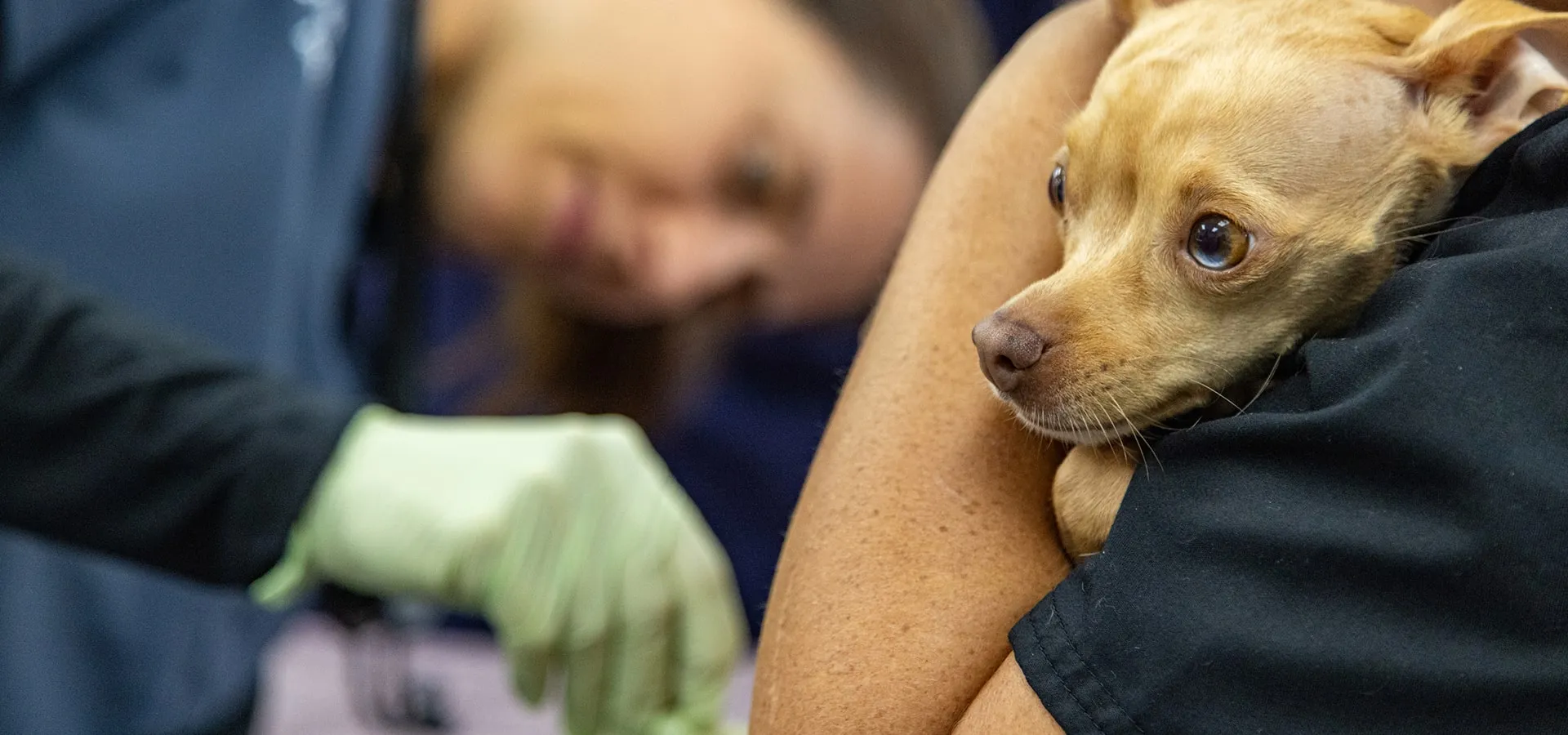
Meet the Dedicated Team Behind Our Success

Dr. Wypart, our founder and lead surgeon, has over 20 years of experience, including thousands of successful TPLO procedures. He is known not only for his surgical excellence but also for the genuine empathy and honesty that comfort every pet parent who walks through our doors.
Dr. Wypart is a highly skilled veterinarian with over two decades of experience in orthopedic and soft tissue surgery. He earned his veterinary degree from the Warsaw University of Life Sciences and completed advanced specialty training in veterinary surgery at the European University of Environmental and Life Sciences. His clinical skills have been shaped by extensive international practice across Europe and North America.
Since relocating to San Diego in 2012, Dr. Wypart has become known for his surgical expertise, particularly in orthopedic procedures involving joint trauma, complex fractures, and advanced soft tissue techniques. A member of the Veterinary Orthopedic Society, he has performed over 1,000 successful TPLO surgeries and remains actively engaged in continuing education focused on fracture management, joint disease, and advanced soft tissue procedures.
Dr. Wypart founded SurgiPet to bring specialized surgical care to pets in San Diego and the surrounding area. His practice focuses on advanced procedures including TPLO for cranial cruciate ligament repair, arthroscopy, and minimally invasive fracture repair.
Outside of surgery, Dr. Wypart enjoys growing vegetables in his backyard, perfecting new soup recipes, and hiking Potato Chip Mountain.

Dr. Margaret Wypart, our co-founder and medical director, is one of a few veterinary anesthesia specialists in California. She personally evaluates your pet’s health, designs a customized anesthesia plan, and ensures they wake up comfortably - just like an anesthesiologist does for people in a hospital.
Dr. Margaret Wypart, DACVAA, is the Medical Director and co-founder of SurgiPet. After veterinary school, she spent three additional years at the University of Pennsylvania's highly respected residency program, focusing exclusively on mastering anesthesia and pain management. This specialized training means she's an expert at keeping pets safe and pain-free during surgery—customizing anesthesia for each individual patient based on their age, health status, and the specific procedure they're having. Whether it's a healthy young dog or a senior pet with underlying health concerns, Dr. Margaret Wypart has the expertise to provide the safest anesthesia possible.
One of only a few board-certified veterinary anesthesiologists practicing in San Diego County, she specializes in ultrasound-guided nerve blocks to minimize discomfort and reduce reliance on systemic medications—allowing pets to wake up more smoothly and return home the same day. Her approach follows the principles of Enhanced Recovery After Surgery (ERAS), emphasizing proactive pain control, early mobility, and rapid return to function.
Outside of work, Dr. Wypart enjoys hiking, skiing, and photography.

Amber has over two decades of experience as a Registered Veterinary Technician. One of her greatest joys is mentoring and training newer staff, sharing the passion for veterinary care that has driven her throughout her career.
Amber is a Registered Veterinary Technician and our Nursing Director, bringing more than 20 years of experience in veterinary medicine to our team. Most of Amber’s career has been spent in emergency and intensive care, where she developed strong skills in critical patient management, anesthesia, and team leadership. For the past two years, she has brought that expertise to our surgical center, where she focuses on ensuring a smooth experience for patients from admission through recovery and supporting our team in providing exceptional surgical nursing care.
Amber is passionate about creating a positive, collaborative environment for both her team and our clients. She believes that every patient deserves individualized, compassionate care and takes pride in building trust with the families who bring their pets to us. She also enjoys mentoring veterinary professionals and helping others grow within the field.
Outside of work, Amber loves spending time with her family and many pets, traveling in their RV, and curling up with a good book.
No surprises!
Transparent, All-inclusive Pricing for Surgery

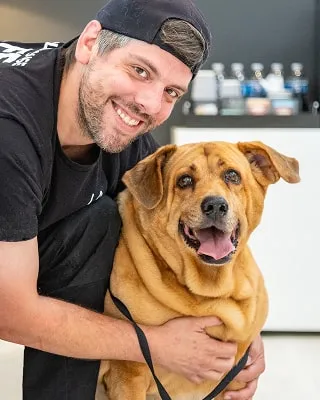
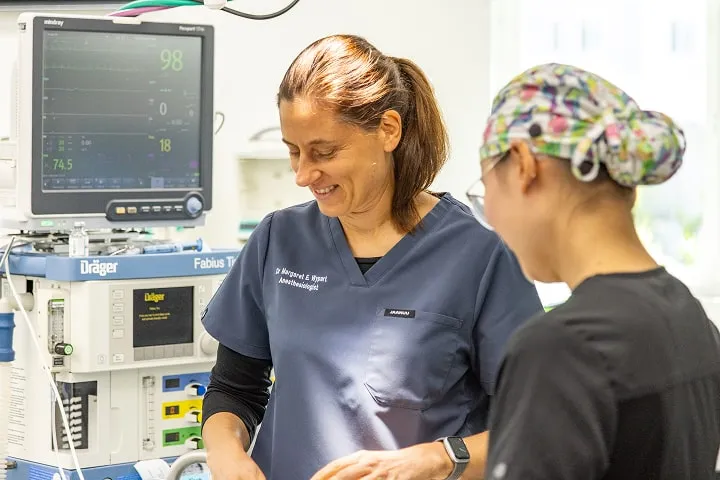

Ready to Give Your Pet the Best Care?
Schedule a consultation today and see why thousands of pet owners choose us.
Book in Just Minutes
Simple and hassle-free scheduling for your convenience.
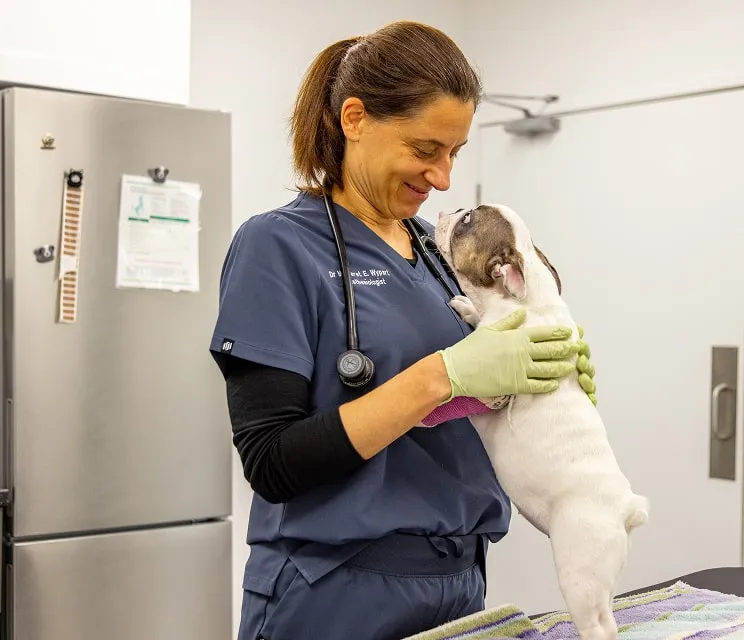
Have Questions? We’re Here to Help!

No matter what bone is broken, bone breaks in dogs are typically a result of trauma – an unlucky jump, sport injury, high rise syndrome, etc.
In small breed dogs, landing heavily on the front legs following a fall (e.g., out of your arms, or jumping from a height outdoors) is the most common cause of breaking the front leg bone – the forearm.
Meanwhile for large breed dogs, more serious trauma is often the cause of a broken leg, such as being hit by a car or falling from a height.
In an ideal world, your dog’s broken bone would heal naturally on its own – but unfortunately this does not happen too often.
In most cases, a broken leg in dogs requires surgery. While very minor fractures can occasionally be managed with a splint or cast, the vast majority need surgical stabilization to heal correctly. This is especially true for bones like the femur, which cannot be immobilized externally.
Surgery typically involves placing metal plates, screws, or pins to hold the bone in position. Without proper stabilization, the fracture may heal poorly, leading to chronic pain or long-term mobility issues. The exact treatment depends on the type of break and your dog’s overall health.
The most effective way to treat fractures is by surgically stabilizing the bone with a stainless steel or titanium plate and screws. This standard orthopedic procedure has an excellent success rate.
During surgery, the surgeon aligns the bone fragments and uses C-arm images (real-time X-ray) to confirm precise placement of implants. In some cases, a splint or soft bandage may also be used for extra support. Antibiotics and pain medications are provided to prevent infection and ensure your dog stays comfortable throughout recovery.
Good news - almost all pets return to full function and complete healing in 12 weeks.
Recovery involves strict activity restriction:
- Phase 1 (Weeks 1–2): Rest; no walking on operated leg.
- Phase 2 (Weeks 3–8): Short walks allowed; mild to moderate lameness expected.
- Phase 3 (Weeks 9–12): Dog should be using the leg well. A bit longer walks are allowed but no running, playing or other high-energy activities.
In most cases, the prognosis is excellent for pets that receive prompt and appropriate surgical treatment for their fractures. Surgical repair is indeed the best option for most fractures, and greatly reduces the risk of any long-term health issues for your dog.
Fractures typically heal in 6–12 weeks depending on severity, age, and treatment. Most dogs return to full activity within 3 months.
No. Without proper treatment, bones may not align correctly, leading to long-term pain and mobility issues. Surgery is often necessary. Some fractures can be stabilized with a splint or cast, but certain bones, like the femur (thigh bone), cannot be immobilized this way.
At SurgiPet, fracture repair is priced as a flat-fee package that includes nearly everything your dog needs for surgery and follow-up care, so you know your costs up front.
What’s included in the flat fee:
- All consultations with the surgeon
- Anesthesia managed by a doctor who specializes only in anesthesia and pain control — the same type of specialist who runs anesthesia in human hospitals
- Advanced nerve block technique to start pain control before surgery begins
- Operating room and surgeon’s fee
- All standard surgical supplies used during your dog’s procedure
- Pain medication, sedatives, antibiotics, and anti-nausea meds for the first 2 weeks
- Support sling to help your dog walk during early recovery
- All recheck exams and X-rays for 4 months (sedation included if needed)
- Pre-op bloodwork and chest X-rays (if needed)
- High-strength titanium implants (plates and screws), the same type of metal used in human surgery
Not included: medications beyond two weeks (sedatives), surgical complications, physical therapy, or rechecks beyond 4 months.
Fracture repair pricing at SurgiPet (2025) ranges from $4,890 to $7,000 depending on the break complexity, bone location, and your pet’s weight. For most pets we can provide specific quote based on medical records - email info@surgipet.com or call 760-290-8390.
SurgiPet accepts the CareCredit credit card with special financing options* and payment plans through ScratchPay. We provide flat-fee all-inclusive transparent quotes for surgical procedures so that you are fully informed and able to make financial arrangements if necessary. [*Subject to credit approval]


